Start your brief
Get started for free with one of Milanote's inspiring brief templates.
Start your briefSign up for free with no time limit

Follow this step-by-step guide to learn the modern process of writing a logo brief in Milanote, a free tool used by top creatives.

A strong logo is one that's easily recognized and remembered. Think of Nike's swoosh or Twitter's bird. It's the perfect graphical representation of a company. But a logo's design doesn't happen by accident. It's the result of a well-defined brief at the start of the creative process.
A great brief helps the designer understand the company and customers they'll be creating a logo for. It gives them the ingredients to do their most creative work without prescribing the solution. As iconic architect David Rockwell says "A great brief is an inspiring thought starter".
In this guide, you'll learn the modern approach to writing a visual brief using Milanote. Remember, the process is non-linear, so it's OK to move back and forth between the steps as you go.
Start by learning as much as you can about the goals and purpose of the project. A great logo reflects the values and personality of a company. As iconic designer Saul Bass says "logos are the graphic extension of the internal realities of a company."
Spend time with your client, have them lead you through their history and vision in their own words and ask questions like... What does the company stand for? What are your goals? Who are your main competitors? How will the logo be used? How do you want people to feel when they see your logo?
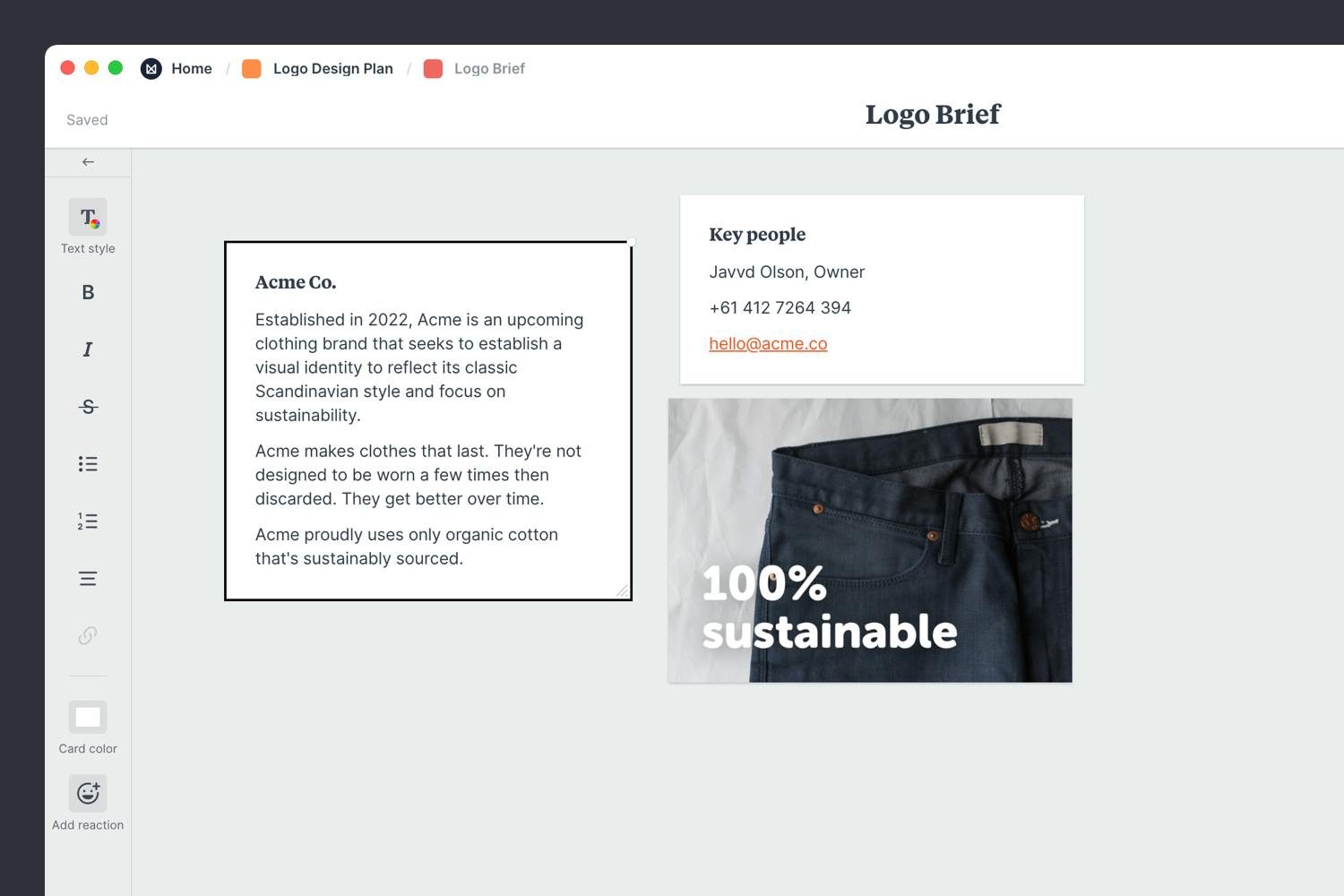
Create a new board for your logo brief.
Drag a board out from the toolbar. Give it a name, then double click to open it.
Choose the built-in Logo Brief template.
Each new board gives you the option to start with a beautiful template.
Once you have a clearer understanding of the company, it’s time to start defining the brand values or look and feel of the logo in words.
Write out the tone or personality you want the logo to reflect. Should it be modern or classic? Formal or playful? Loud or minimal? Young or mature? These simple style choices can help steer designers in the right direction to creating a logo that accurately reflects the organization.
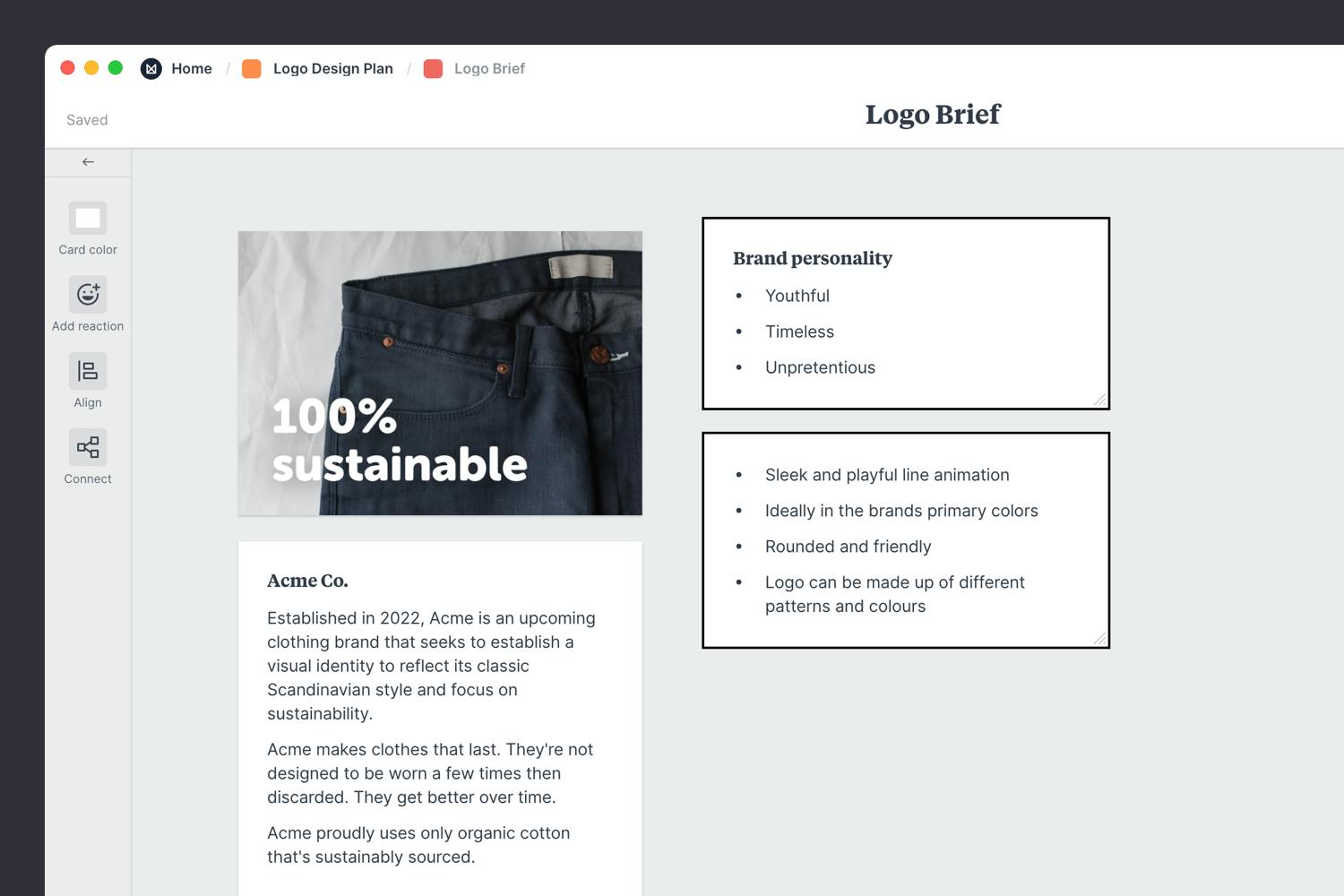
Add a note to describe the brand personality.
Start typing then use the formatting tools in the left hand toolbar.
Creativity often responds well to some constraints or limitations. Defining what the project isn't is a great way to provide useful boundaries. David Ogilvy famously said, "Give me the freedom of a tight (creative) brief."
Your logo will likely be displayed in a variety of places, from business cards, to websites, packaging, clothing and more. Clearly describe where your client plans to use the logo. This will help you create a logo that works in all environments—something that's easy to read at a small size but also looks amazing scaled up on the side of a building.

Add a note to list the deliverables.
Start typing then use the formatting tools in the left hand toolbar.
This is where you describe a specific type of audience and detail what’s important to them. What brands do they love? What's their current relationship with the product or service? What design styles best are they drawn to? Answering these questions will enable your team to think about the project from the perspective of your audience and design something that grabs their attention.
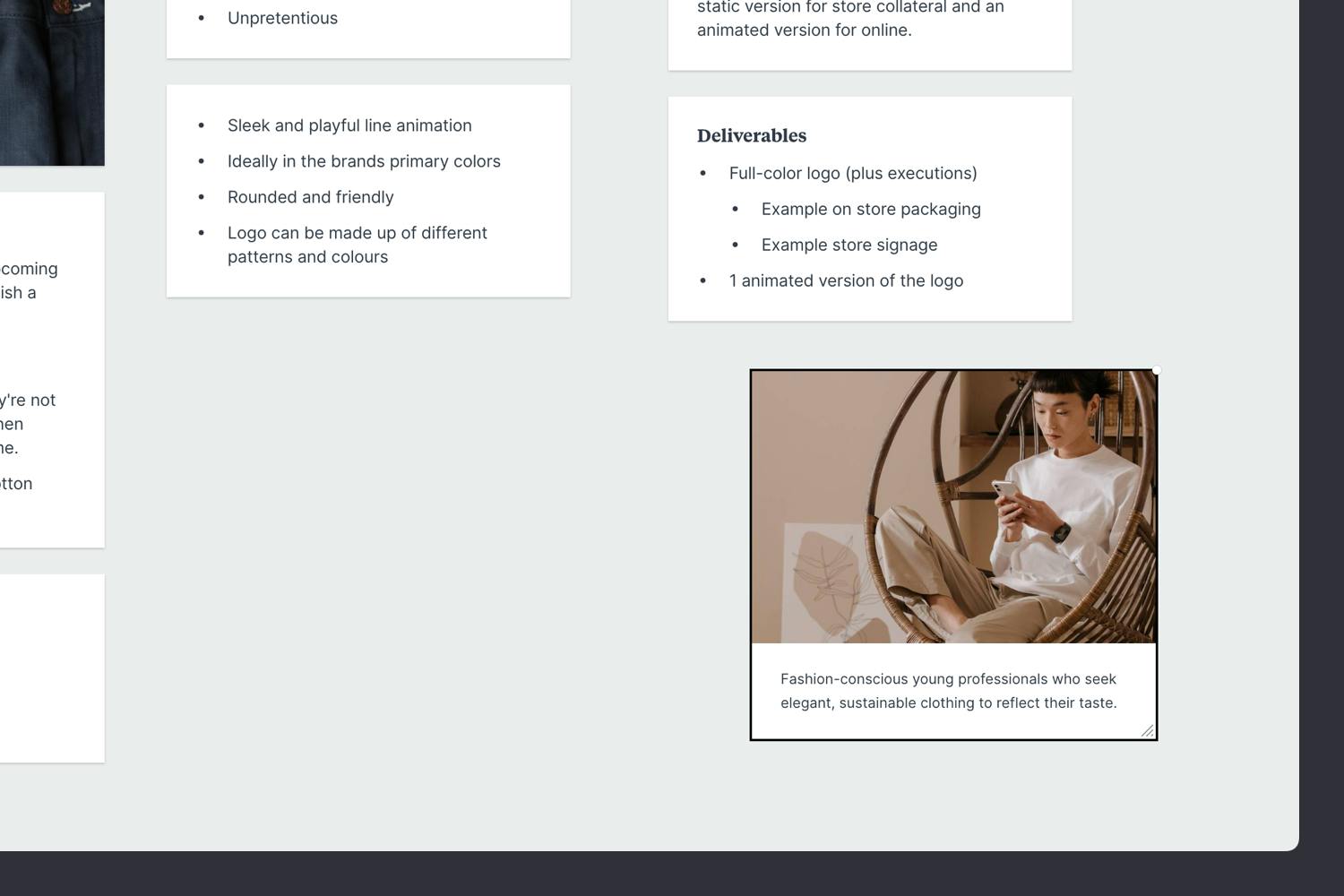
Add a note to describe the audience.
Start typing then use the formatting tools in the left hand toolbar.
Choose a photo to represent your audience.
Search over 3 million beautiful, free photos then drag images straight onto your board. Powered by Pexels.
Before you jump into design, it's essential to understand your clients' design preferences. They know the brand better than anyone so they'll probably have some ideas around the visual direction. Ask them to supply any images that communicate their design preferences, then add them into the brief.
It's equally important to understand what your client likes about these references and how they tie back to the company goals. Is it the colors, the shapes or the personality captured in the images? Or are they examples of what not to do? All these details will help you stay on the same page throughout the design process.
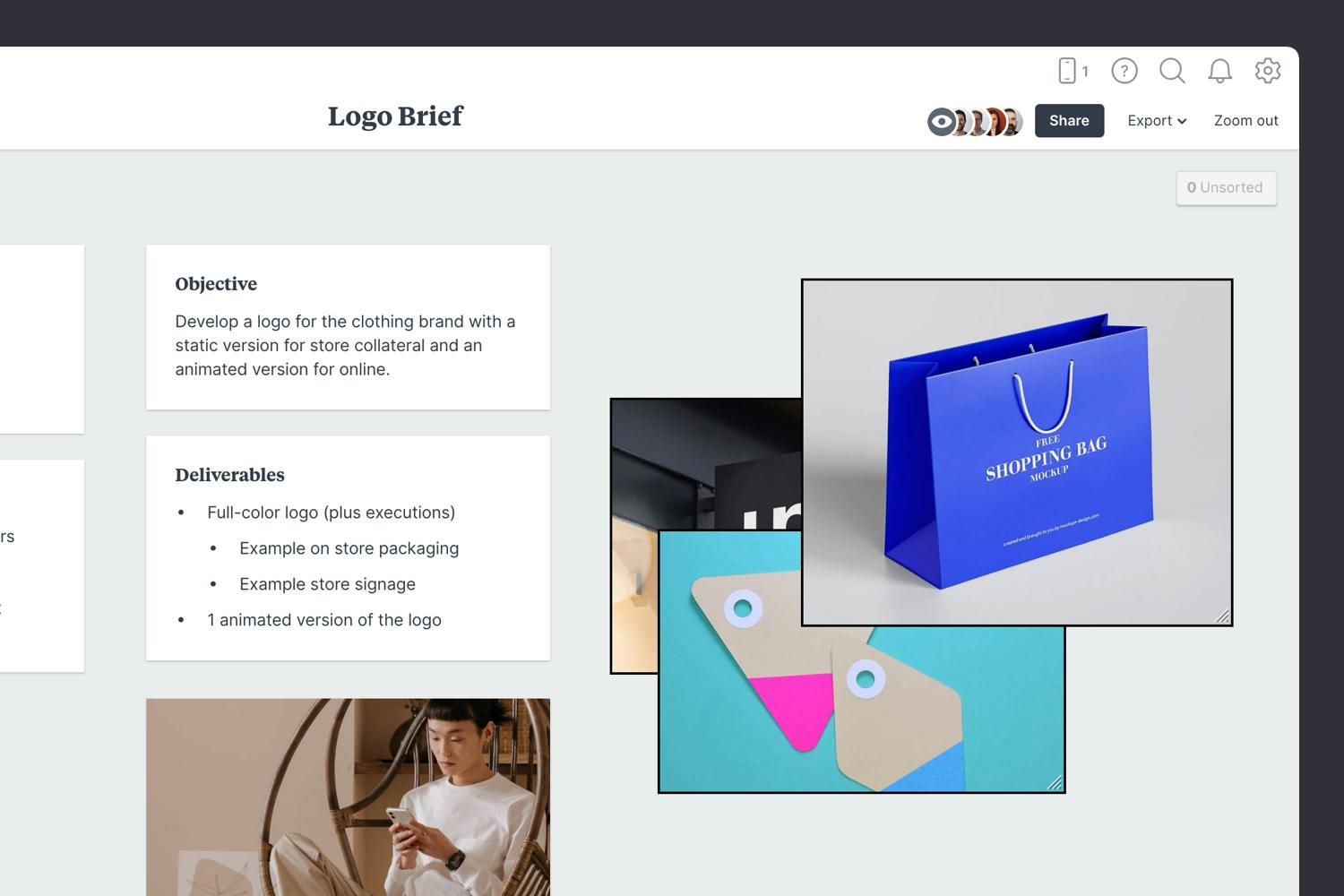
Add reference images supplied by your client.
Click the "Upload" button or just drag a file onto your board. You can add images, logos, documents, videos, audio and much more.
Once you have everything you need, it's time to organize your content into logical topics. The goal here is to present the most important points in an inspiring and concise format. Remember, it's called a brief. In its simplest form, writer and illustrator Maira Kalman says a brief consists of "a deadline and a dream".
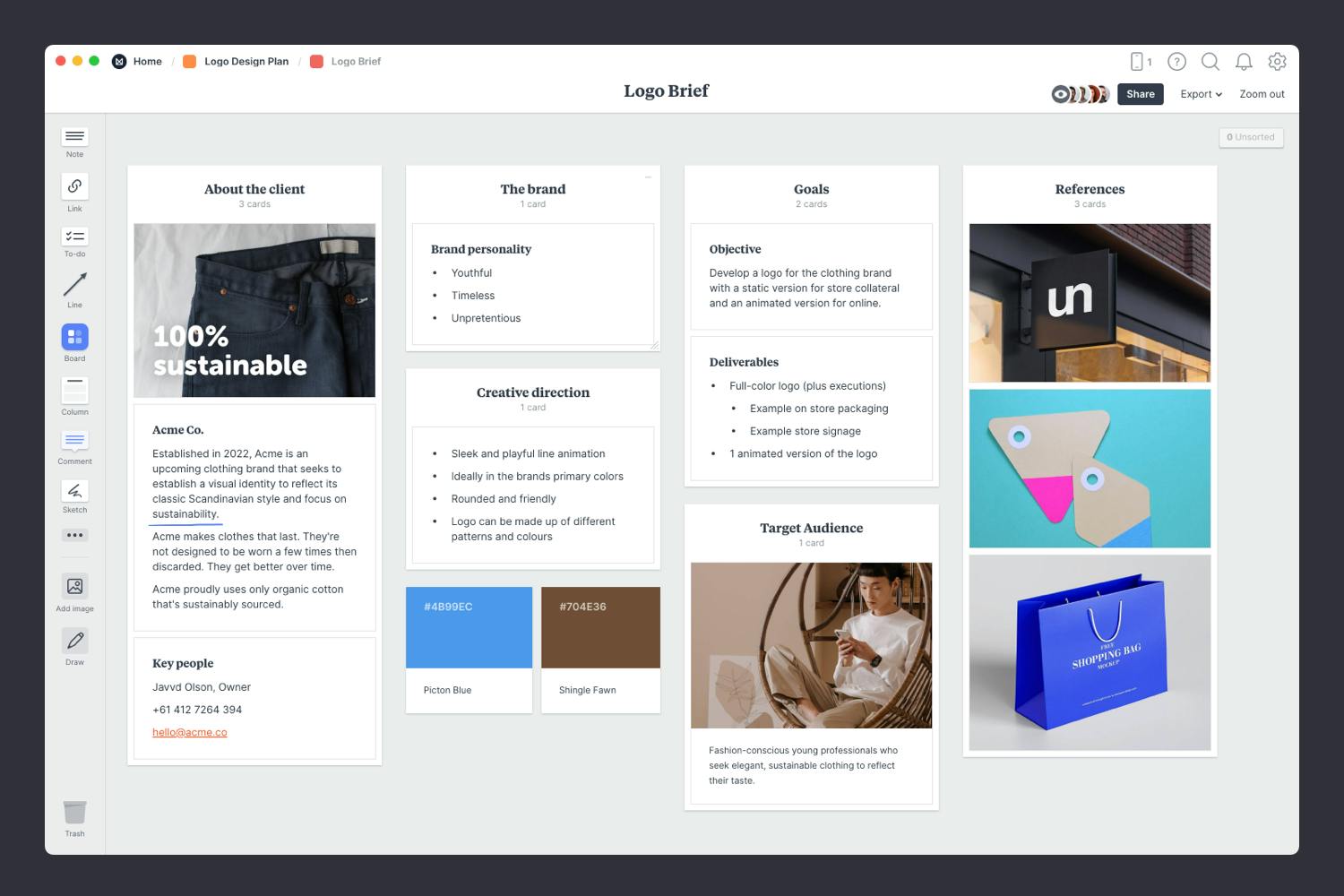
Create a column for each of the main topics in the brief
Name it, then drag any relevant notes, images or boards into your column to stay organized.
Save time on your next project with the free Logo Design Brief template.
While a project brief is typically written by one person, the best briefs will be run past stakeholders, clients or team members for feedback before final approval. This is a great chance to ensure that timelines, budgets and deliverables are understood and that everyone is on the same page before embarking on the project.
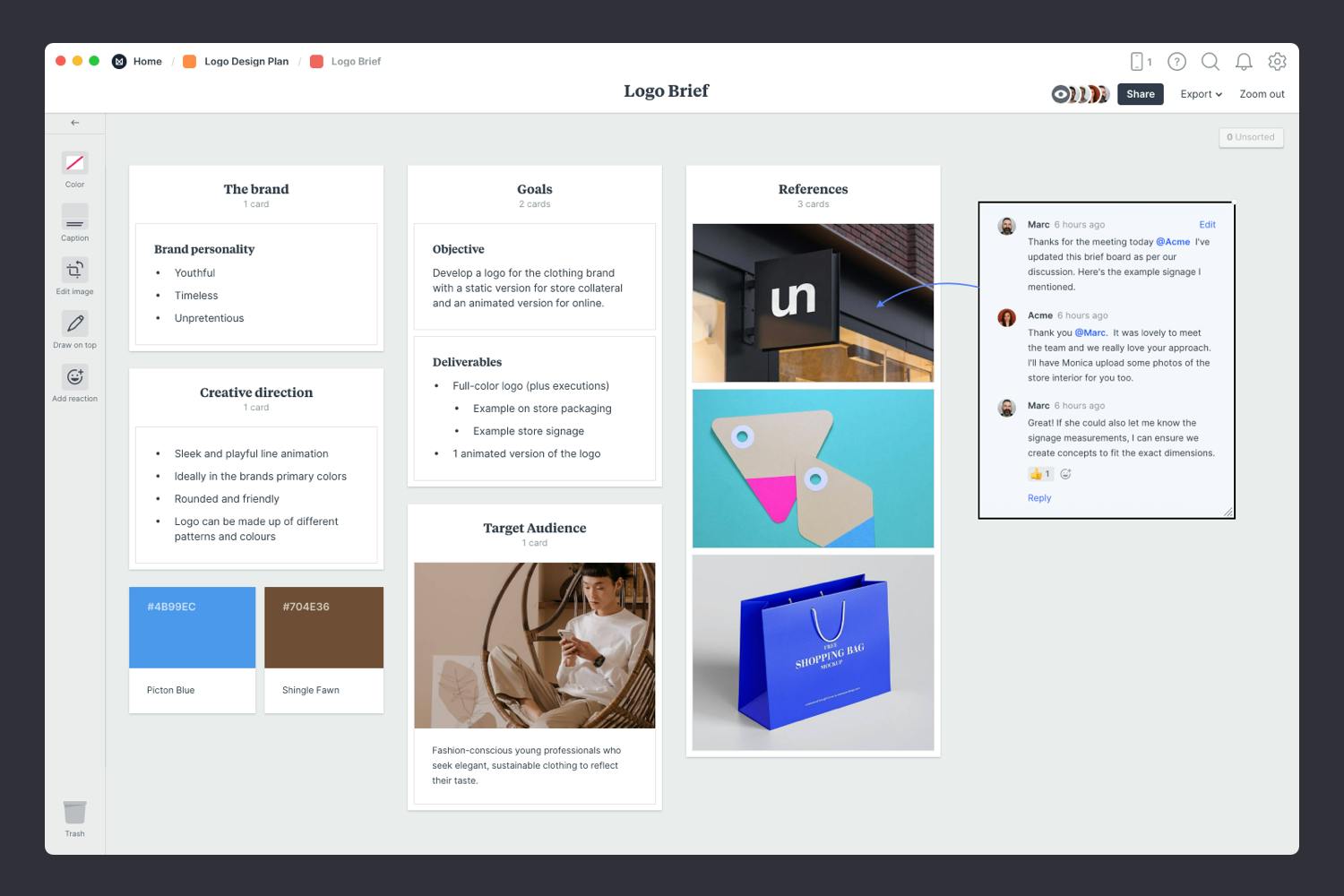
Invite a team member or client to provide feedback.
Open the "Share" menu from the title bar of your board. Add email addresses of the people you'd like to collaborate with—they'll receive an invitation via email.
Start a comment thread.
Drag out a comment from the toolbar on the left and place it on your board. Other editors can reply to your comment.
Mention teammates to get their attention.
Type '@' in any text field to mention someone who has access to your board. They'll receive a notification and be able to respond to your comment.
Once you’ve made any final tweaks, it’s time to share the completed brief with the your team, organize a kickoff meeting and start the project.

Share a link to the brief with your team.
Click Share in the top right of your board. You can add a Welcome message for viewers, allow comments, set a password or embed the board in another app or website.
Now that your brief is complete, you have an inspiring starting point for your logo design project. Remember to revisit your brief at each stage of the creative process. It's a great way to ensure you're still headed in the right direction!
If you're just starting a new logo design project right now, use the free template below or read our full guide on How to plan a logo design project.
